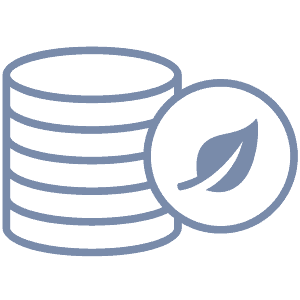1. Overview
This tutorial shows how to set up Spring with JPA, using Hibernate as a persistence provider.
See this article for a step-by-step introduction to setting up the Spring context using Java-based configuration and the basic Maven pom for the project.
We’ll start by setting up JPA in a Spring Boot project. Then we’ll look into the full configuration we need if we have a standard Spring project.
Learn how to define entities and customize them using the Java Persistence API.
A quick, practical intro to integrating Spring Boot and Hibernate/JPA.
2. JPA in Spring Boot
The Spring Boot project is intended to make creating Spring applications much faster and easier. This is done using starters and auto-configuration for various Spring functionalities, JPA among them.
2.1. Maven Dependencies
To enable JPA in a Spring Boot application, we need the spring-boot-starter and spring-boot-starter-data-jpa dependencies:
<dependency>
<groupId>org.springframework.boot</groupId>
<artifactId>spring-boot-starter</artifactId>
<version>3.1.0</version>
</dependency>
<dependency>
<groupId>org.springframework.boot</groupId>
<artifactId>spring-boot-starter-data-jpa</artifactId>
<version>3.1.0</version>
</dependency>
The spring-boot-starter contains the necessary auto-configuration for Spring JPA. Also, the spring-boot-starter-jpa project references all the necessary dependencies, such as hibernate-core.
2.2. Configuration
Spring Boot configures Hibernate as the default JPA provider, so it’s no longer necessary to define the entityManagerFactory bean unless we want to customize it.
Spring Boot can also auto-configure the dataSource bean, depending on the database we’re using. In the case of an in-memory database of type H2, HSQLDB and Apache Derby, Boot automatically configures the DataSource if the corresponding database dependency is present on the classpath.
For example, if we want to use an in-memory H2 database in a Spring Boot JPA application, we only need to add the h2 dependency to the pom.xml file:
<dependency>
<groupId>com.h2database</groupId>
<artifactId>h2</artifactId>
<version>2.1.214</version>
</dependency>
This way, we don’t need to define the dataSource bean, but we can if we want to customize it.
If we want to use JPA with MySQL database, we need the mysql-connector-java dependency. We’ll also need to define the DataSource configuration.
We can do this in a @Configuration class or by using standard Spring Boot properties.
The Java configuration looks the same as it does in a standard Spring project:
@Bean
public DataSource dataSource() {
DriverManagerDataSource dataSource = new DriverManagerDataSource();
dataSource.setDriverClassName("com.mysql.cj.jdbc.Driver");
dataSource.setUsername("mysqluser");
dataSource.setPassword("mysqlpass");
dataSource.setUrl(
"jdbc:mysql://localhost:3306/myDb?createDatabaseIfNotExist=true");
return dataSource;
}
To configure the data source using a properties file, we have to set properties prefixed with spring.datasource:
spring.datasource.driver-class-name=com.mysql.cj.jdbc.Driver
spring.datasource.username=mysqluser
spring.datasource.password=mysqlpass
spring.datasource.url=
jdbc:mysql://localhost:3306/myDb?createDatabaseIfNotExist=true
Spring Boot will automatically configure a data source based on these properties.
Also, in Spring Boot 1, the default connection pool was Tomcat, but it has been changed to HikariCP with Spring Boot 2.
We have more examples of configuring JPA in Spring Boot in the GitHub project.
As we can see, the basic JPA configuration is fairly simple if we’re using Spring Boot.
However, if we have a standard Spring project, we need a more explicit configuration using Java or XML. That’s what we’ll focus on in the next sections.
3. The JPA Spring Configuration With Java in a Non-Boot Project
To use JPA in a Spring project, we need to set up the EntityManager.
This is the main part of the configuration, and we can do it via a Spring factory bean. This can be either the simpler LocalEntityManagerFactoryBean or, the more flexible LocalContainerEntityManagerFactoryBean.
Let’s see how we can use the latter option:
@Configuration
@EnableTransactionManagement
public class PersistenceJPAConfig {
@Bean
public LocalContainerEntityManagerFactoryBean entityManagerFactory() {
LocalContainerEntityManagerFactoryBean em
= new LocalContainerEntityManagerFactoryBean();
em.setDataSource(dataSource());
em.setPackagesToScan("com.baeldung.persistence.model");
JpaVendorAdapter vendorAdapter = new HibernateJpaVendorAdapter();
em.setJpaVendorAdapter(vendorAdapter);
em.setJpaProperties(additionalProperties());
return em;
}
// ...
}
We also need to explicitly define the DataSource bean we’ve used above:
@Bean
public DataSource dataSource(){
DriverManagerDataSource dataSource = new DriverManagerDataSource();
dataSource.setDriverClassName("com.mysql.cj.jdbc.Driver");
dataSource.setUrl("jdbc:mysql://localhost:3306/spring_jpa");
dataSource.setUsername( "tutorialuser" );
dataSource.setPassword( "tutorialmy5ql" );
return dataSource;
}
The final part of the configuration is the additional Hibernate properties and the TransactionManager and exceptionTranslation beans:
@Bean
public PlatformTransactionManager transactionManager() {
JpaTransactionManager transactionManager = new JpaTransactionManager();
transactionManager.setEntityManagerFactory(entityManagerFactory().getObject());
return transactionManager;
}
@Bean
public PersistenceExceptionTranslationPostProcessor exceptionTranslation(){
return new PersistenceExceptionTranslationPostProcessor();
}
Properties additionalProperties() {
Properties properties = new Properties();
properties.setProperty("hibernate.hbm2ddl.auto", "create-drop");
properties.setProperty("hibernate.dialect", "org.hibernate.dialect.MySQL5Dialect");
return properties;
}
4. JPA Spring Configuration With XML
Next, let’s see the same Spring configuration with XML:
<bean id="myEmf"
class="org.springframework.orm.jpa.LocalContainerEntityManagerFactoryBean">
<property name="dataSource" ref="dataSource" />
<property name="packagesToScan" value="com.baeldung.persistence.model" />
<property name="jpaVendorAdapter">
<bean class="org.springframework.orm.jpa.vendor.HibernateJpaVendorAdapter" />
</property>
<property name="jpaProperties">
<props>
<prop key="hibernate.hbm2ddl.auto">create-drop</prop>
<prop key="hibernate.dialect">org.hibernate.dialect.MySQL5Dialect</prop>
</props>
</property>
</bean>
<bean id="dataSource"
class="org.springframework.jdbc.datasource.DriverManagerDataSource">
<property name="driverClassName" value="com.mysql.cj.jdbc.Driver" />
<property name="url" value="jdbc:mysql://localhost:3306/spring_jpa" />
<property name="username" value="tutorialuser" />
<property name="password" value="tutorialmy5ql" />
</bean>
<bean id="transactionManager" class="org.springframework.orm.jpa.JpaTransactionManager">
<property name="entityManagerFactory" ref="myEmf" />
</bean>
<tx:annotation-driven />
<bean id="persistenceExceptionTranslationPostProcessor" class=
"org.springframework.dao.annotation.PersistenceExceptionTranslationPostProcessor" />
There’s a relatively small difference between the XML and the new Java-based configuration. Namely, in XML, a reference to another bean can point to either the bean or a bean factory for that bean.
But in Java, since the types are different, the compiler doesn’t allow it, and so the EntityManagerFactory is first retrieved from its bean factory and then passed to the transaction manager:
transactionManager.setEntityManagerFactory(entityManagerFactory().getObject());
5. Going Full XML-less
Usually, JPA defines a persistence unit through the META-INF/persistence.xml file. Starting with Spring 3.1, the persistence.xml is no longer necessary. The LocalContainerEntityManagerFactoryBean now supports a packagesToScan property where the packages to scan for @Entity classes can be specified.
This file was the last piece of XML we need to remove. We can now set up JPA fully with no XML.
We would usually specify JPA properties in the persistence.xml file.
Alternatively, we can add the properties directly to the entity manager factory bean:
factoryBean.setJpaProperties(this.additionalProperties());
As a side note, if Hibernate is the persistence provider, this would be the way to specify Hibernate-specific properties as well.
6. The Maven Configuration
In addition to the Spring Core and persistence dependencies — shown in detail in the Spring with Maven tutorial — we also need to define JPA and Hibernate in the project as well as a MySQL connector:
<dependency>
<groupId>org.hibernate</groupId>
<artifactId>hibernate-core</artifactId>
<version>6.4.2.Final</version>
</dependency>
<dependency>
<groupId>mysql</groupId>
<artifactId>mysql-connector-java</artifactId>
<version>8.0.19</version>
<scope>runtime</scope>
</dependency>
Note that the MySQL dependency is included here as an example. We need a driver to configure the data source, but any Hibernate-supported database will do.
7. Conclusion
This tutorial illustrated configuring JPA with Hibernate in Spring in both a Spring Boot and a standard Spring application.
As always, the code presented in this article is available on GitHub.





